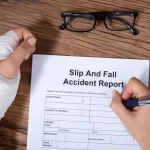In today’s digital age, sharing moments from our lives on social media has become second nature. A quick photo here, a status update there — it all seems harmless enough. But if you’re pursuing a personal injury claim, that innocent Instagram post or Facebook check-in could be the evidence that destroys your case and costs you thousands of dollars in compensation.
Defense attorneys and insurance companies have become increasingly sophisticated in their use of social media to undermine injury claims. According to recent legal research, attorneys report a significant increase in cases using social media evidence over the past five years, with digital content from platforms like Facebook, Instagram, Twitter, and TikTok playing a decisive role in approximately 500,000 legal cases.
Understanding how your online presence can impact your personal injury case isn’t just helpful — it’s essential to protecting your right to fair compensation.
How Social Media Evidence Is Used Against You
When you file a personal injury claim, you’re essentially telling a story about how an accident has impacted your life. You’re documenting your pain, your limitations, and how your injuries have affected your ability to work, enjoy activities, and maintain your quality of life. But what happens when your social media tells a different story?
Defense attorneys and insurance adjusters are actively monitoring claimants’ social media accounts, searching for any content that contradicts injury claims. They employ sophisticated investigation techniques, including:
Monitoring Public and Private Content
Many people believe that setting their profiles to “private” protects them from legal scrutiny. Unfortunately, that’s a dangerous misconception. Courts have consistently ruled that social media content — even posts marked as private — is admissible evidence if it’s relevant to the case. Defense teams can and do subpoena social media companies to access private messages, deleted posts, and content you thought was hidden.
Analyzing Photos and Videos
A single photograph can undermine months of medical documentation. If you claim a debilitating back injury prevents you from working, but your Facebook shows photos of you gardening, playing with your children, or attending a concert, defense attorneys will argue that your injuries aren’t as severe as claimed. Even if that photo captured a rare good day or a moment where you pushed through pain to attend a family event, the context is often lost when presented in court.
Scrutinizing Check-Ins and Location Data
Location tags and check-ins can be particularly damaging. Checking in at a gym, restaurant, or vacation spot might seem innocent, but it can be twisted to suggest you’re more active and less injured than your claim indicates. Defense teams use this data to build a narrative that contradicts your testimony.
Real Cases Where Social Media Destroyed Injury Claims
The consequences of careless social media use aren’t theoretical. Real people have lost substantial compensation because of their online activity:
In one high-profile case, a plaintiff claiming severe neck injuries was photographed lifting weights at the gym. The defense successfully argued the injury wasn’t debilitating, resulting in a drastically reduced settlement. In another case, a claimant seeking compensation for chronic pain shared vacation photos showing active travel. These images were introduced as evidence to dispute the extent of injuries, leading to a lower award.
Perhaps most surprisingly, even posts made by friends and family can damage your case. If someone tags you in a photo at a social gathering or posts about your activities, that content can be subpoenaed and used against you — even if you didn’t post it yourself.
The Most Common Social Media Mistakes
Posting About Your Accident or Injuries
It’s natural to want to update friends and family about your condition, especially after a serious accident. However, any statement you make about the accident, your injuries, or your recovery can be taken out of context and used to contradict your legal testimony. What seems like a simple update — “feeling better today!” — can be twisted to suggest you’ve fully recovered.
Sharing Photos of Physical Activity
This is perhaps the most damaging mistake. Any photo showing you engaged in physical activity — even simple tasks like carrying groceries or playing with pets — can be used to argue that your injuries are exaggerated. Insurance companies are experts at minimizing claims, and social media gives them powerful ammunition.
Discussing Your Case Details
Never discuss legal strategy, settlement negotiations, or case details on social media. These discussions are not protected by attorney-client privilege when posted publicly, and they can reveal information that weakens your legal position.
Accepting New Friend Requests
Defense investigators sometimes create fake profiles to gain access to your content. Be extremely cautious about accepting friend requests from people you don’t know personally during an active legal case.
What Courts Say About Social Media Evidence
The legal system has adapted quickly to the digital age. Courts across the country have established clear precedents that social media content is valid and admissible evidence in personal injury proceedings. The Federal Rules of Evidence treat social media posts the same as any other documentary evidence, as long as they meet two key criteria:
Authentication: The party presenting the evidence must prove the content is genuine and originates from the account in question. This is typically established through witness testimony, metadata, or direct confirmation from the social media platform.
Relevance: The content must have a direct bearing on the claims or defenses in the case. Courts generally allow social media evidence if it relates to the plaintiff’s physical condition, activities, or emotional state.
Even inactive accounts aren’t safe. If you stop posting or deactivate your account during litigation, everything you posted previously can still be subpoenaed and used as evidence.
How to Protect Your Claim While Using Social Media
The safest approach is to avoid social media entirely while your personal injury case is pending. However, if complete abstinence isn’t realistic, follow these strict guidelines:
Implement a Total Social Media Blackout on Case-Related Content
Never post, comment, or share anything related to your accident, injuries, medical treatment, or legal proceedings. This includes responding to well-meaning questions from friends about your recovery.
Review and Adjust Privacy Settings
While privacy settings aren’t foolproof protection, they add a layer of security. Set all profiles to maximum privacy, limit who can see your posts, and restrict who can tag you in content. Remember, however, that courts can still order disclosure of private content.
Pause All Photo and Video Sharing
Avoid posting any photos or videos of yourself, even from before your accident. It can be difficult to prove when images were taken, and out-of-context photos can be misinterpreted.
Alert Friends and Family
Have a frank conversation with your social circle about your legal case. Ask them not to post about you, tag you in photos, or share updates about your activities. Their posts can be as damaging as your own.
Don’t Delete Old Posts
It might be tempting to scrub your social media history, but deleting posts after an accident can be considered spoliation of evidence — destruction of relevant information. This can result in serious legal consequences, including sanctions or an adverse inference instruction where the judge tells the jury to assume deleted content would have been unfavorable to your case.
When Social Media Can Actually Help Your Case
While social media typically poses risks for plaintiffs, it can occasionally work in your favor. Posts from the at-fault party admitting fault or discussing the accident can be powerful evidence. For example, if a driver who hit you posts “wasn’t paying attention” or “texting and driving, oops,” that admission can significantly strengthen your claim.
Additionally, social media posts showing your quality of life and activity levels before the accident can help establish the contrast with your post-injury condition. These “before” snapshots demonstrate what you’ve lost, supporting claims for diminished quality of life.
The Bottom Line: Your Digital Footprint Matters
In the interconnected world of 2025, your social media presence is an extension of your legal testimony. Every post, photo, comment, and like creates a digital record that can be scrutinized by opposing counsel. What you intended as a casual update to friends can become the centerpiece of an argument that you’re exaggerating your injuries or that you’ve already recovered.
The stakes are too high to take chances. After an accident, your priority should be physical recovery and building the strongest possible legal case — not maintaining your social media presence.
If you’re pursuing a personal injury claim, consult with an experienced attorney about your specific situation. They can provide personalized guidance on managing your online presence and avoiding the costly mistakes that have derailed countless cases. Remember: that Instagram story might last 24 hours, but its impact on your legal case could cost you thousands of dollars in compensation.
Your best posts are the ones you don’t make. When your financial future is on the line, silence truly is golden.



